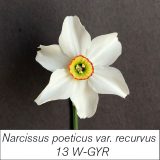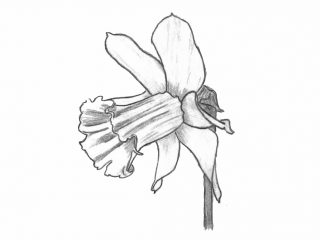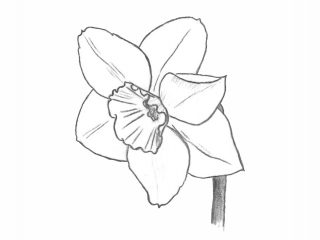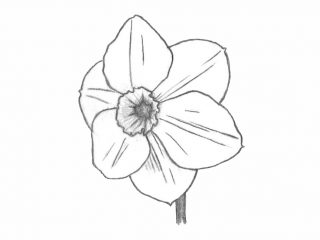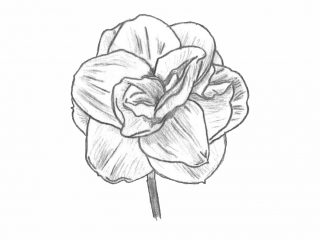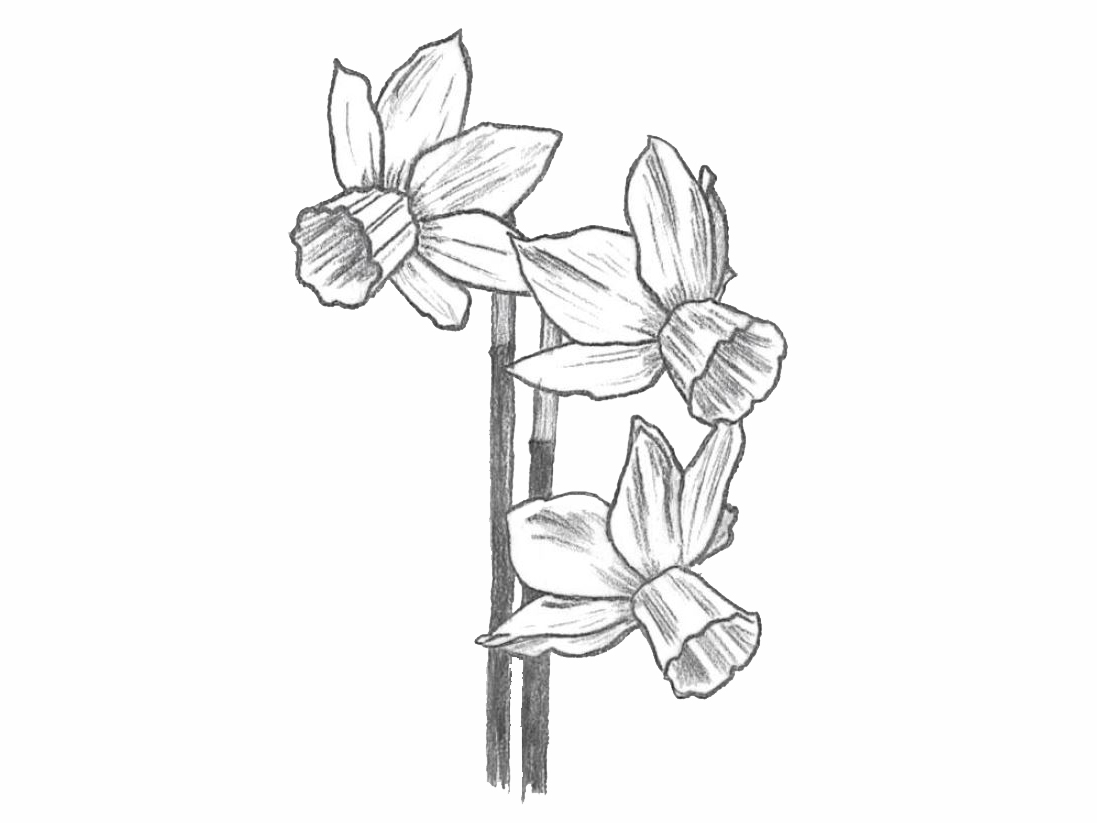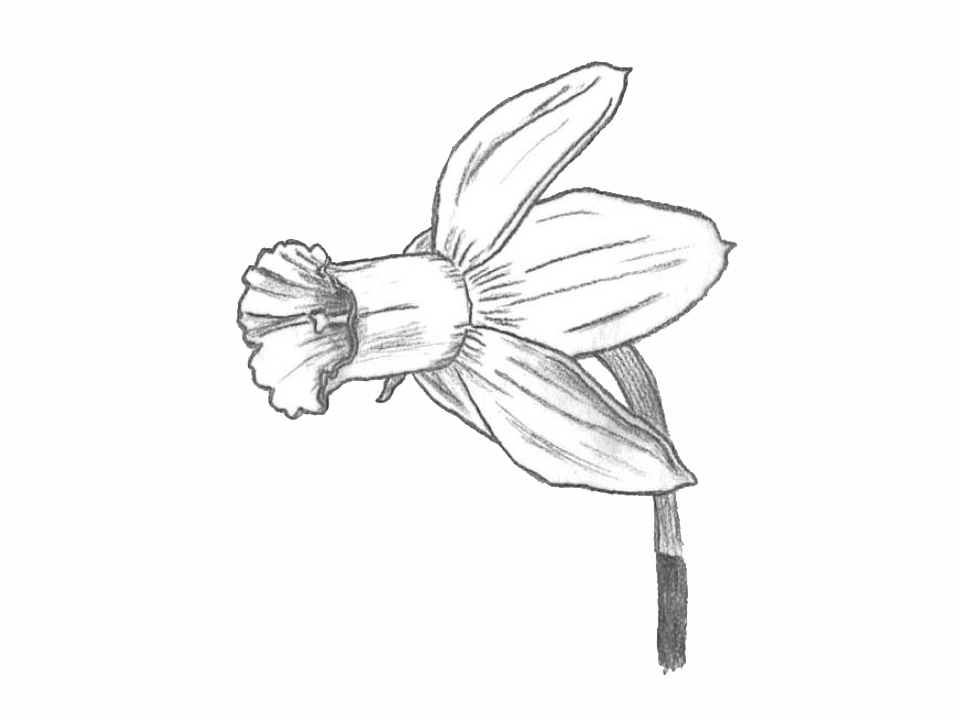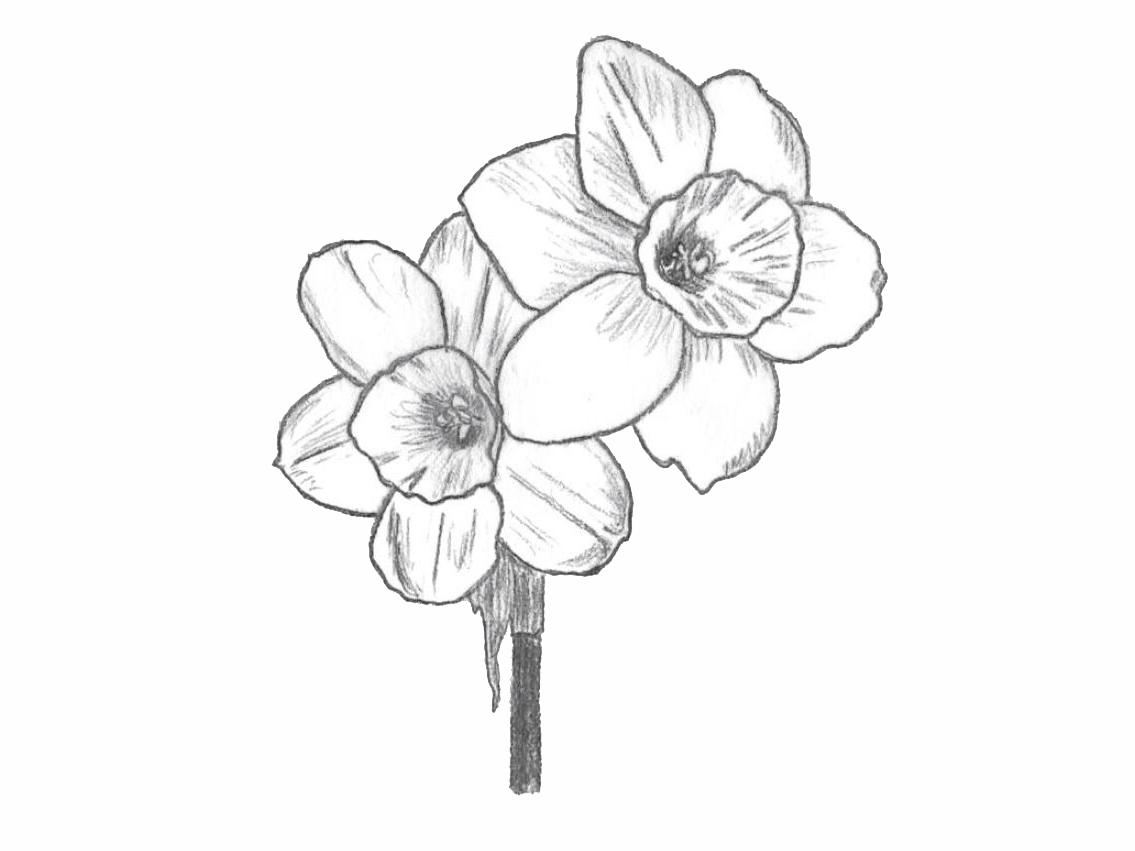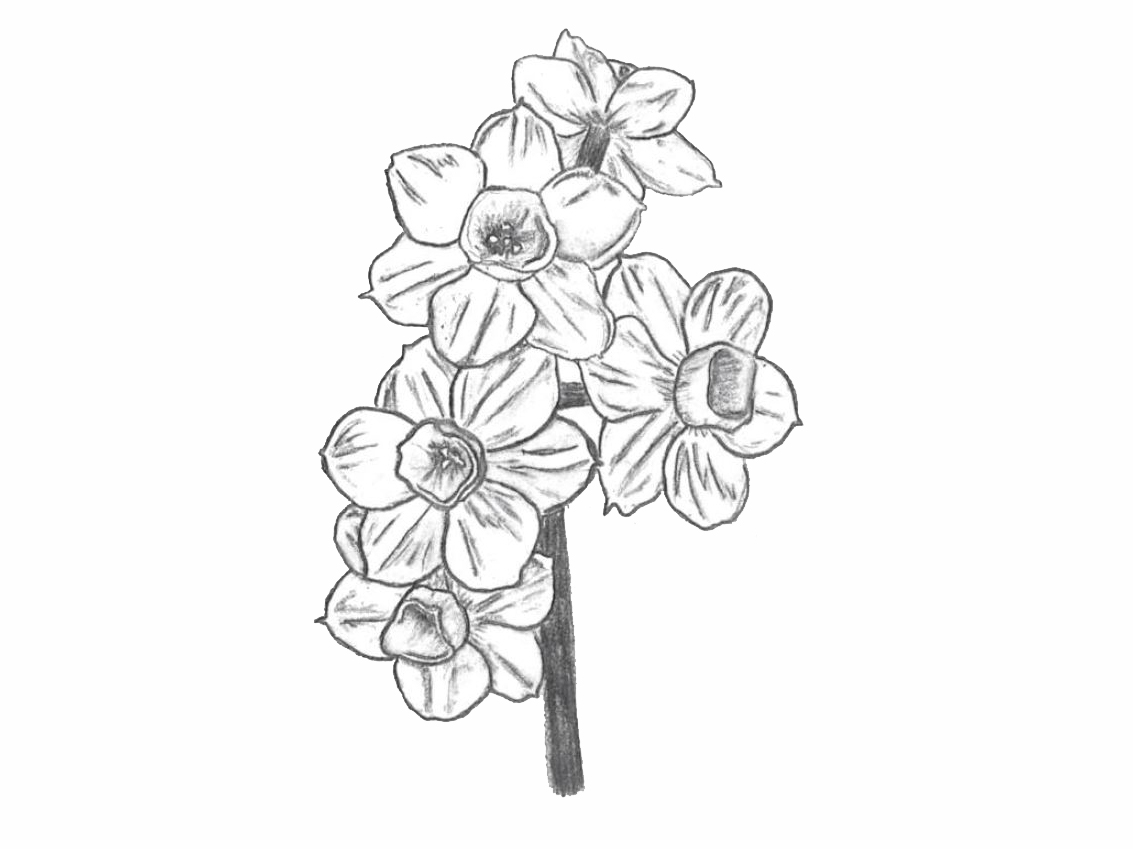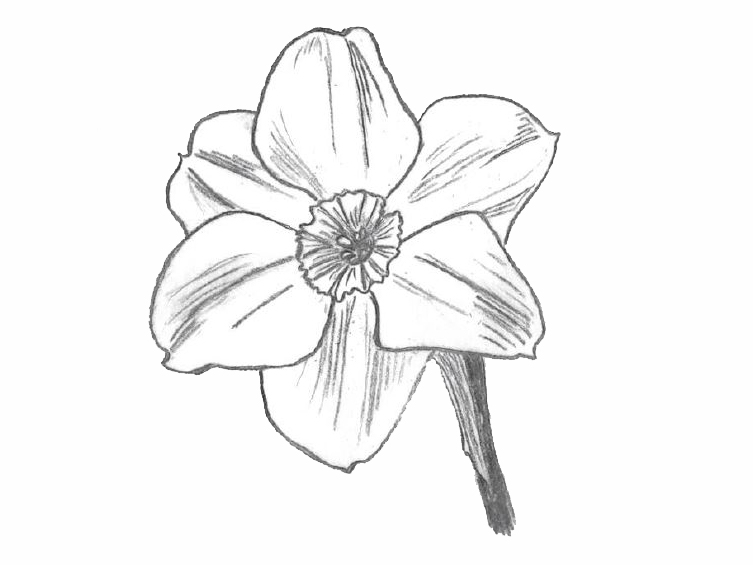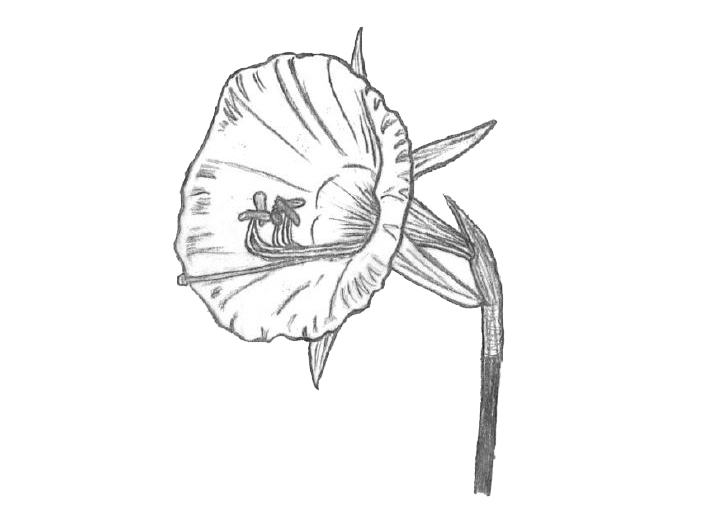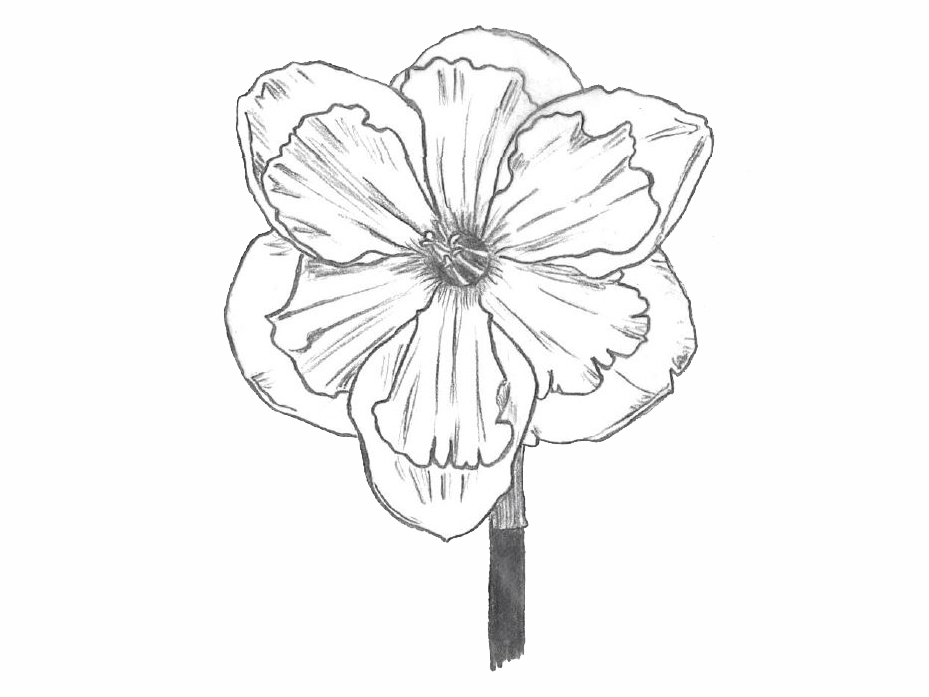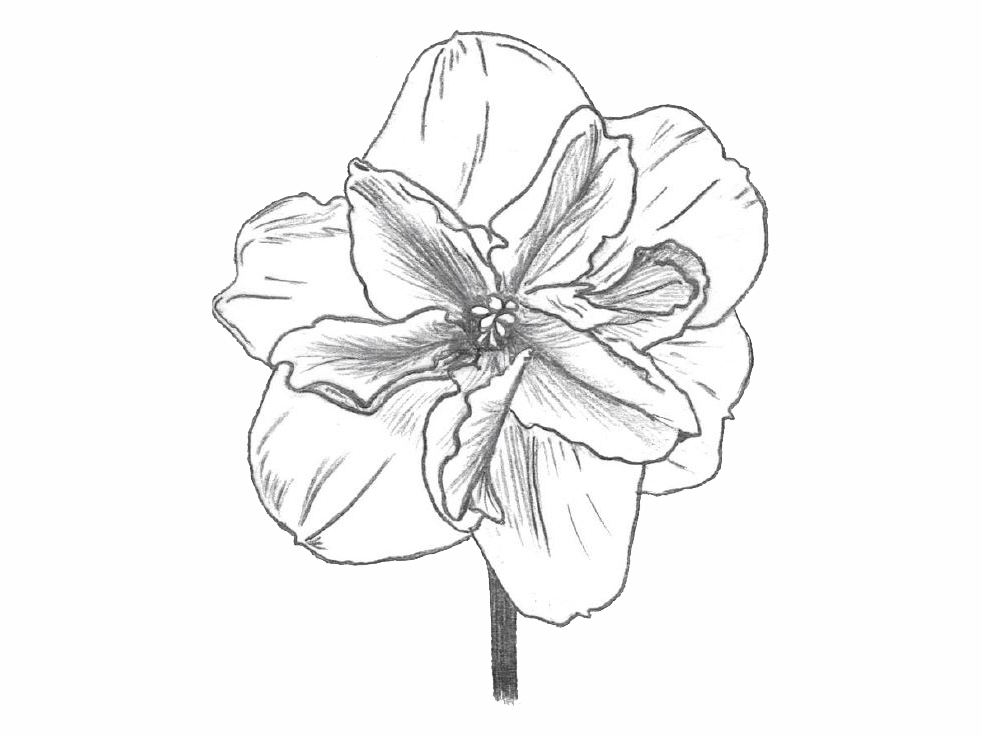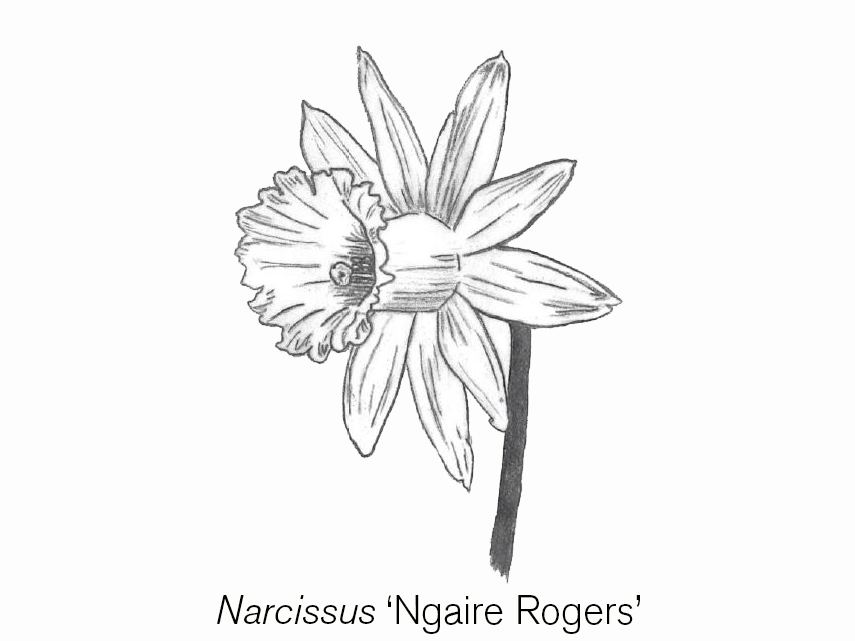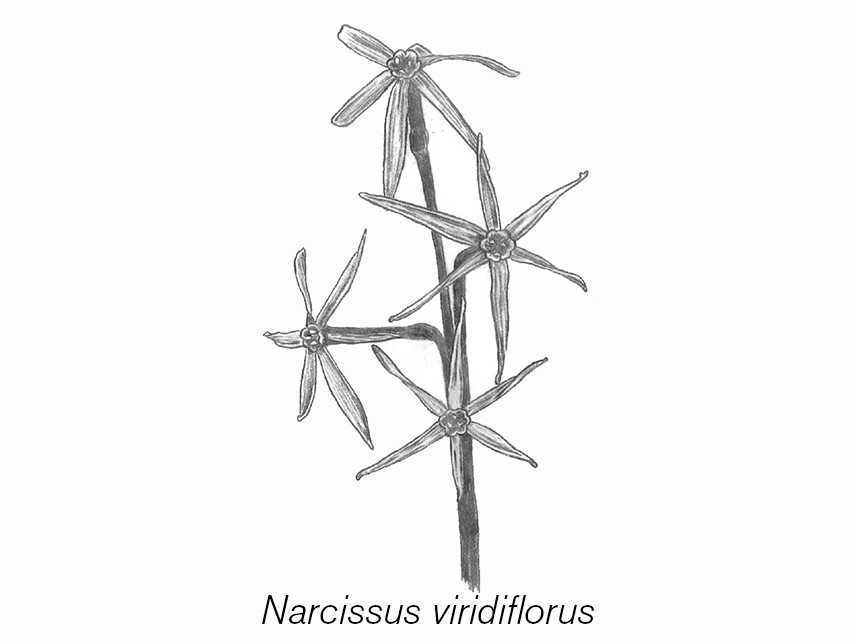Classifying Daffodils
When identifying daffodils, determining its division is just the first step. Another categorizing system we use is color classification. This color-based system includes the division of the flower (in this case 13), followed by the color of the perianth segments, or tepals, and the color(s) of the corona.
The tepals are identified first, then the corona. In this case, the tepals are white, and is noted in the code as a W. The corona for this daffodil is comprised of three colors. In the code, the colors are recorded starting from the base of the corona, moving outward to the rim. The base of the corona in our example is green, then yellow, with a red rim. This is noted in the code as GYR.
This system of classification was adopted by the Royal Horticultural Society in 1975. It continues to be immensely useful for identifying unknown daffodils and maintaining historic collections today.

